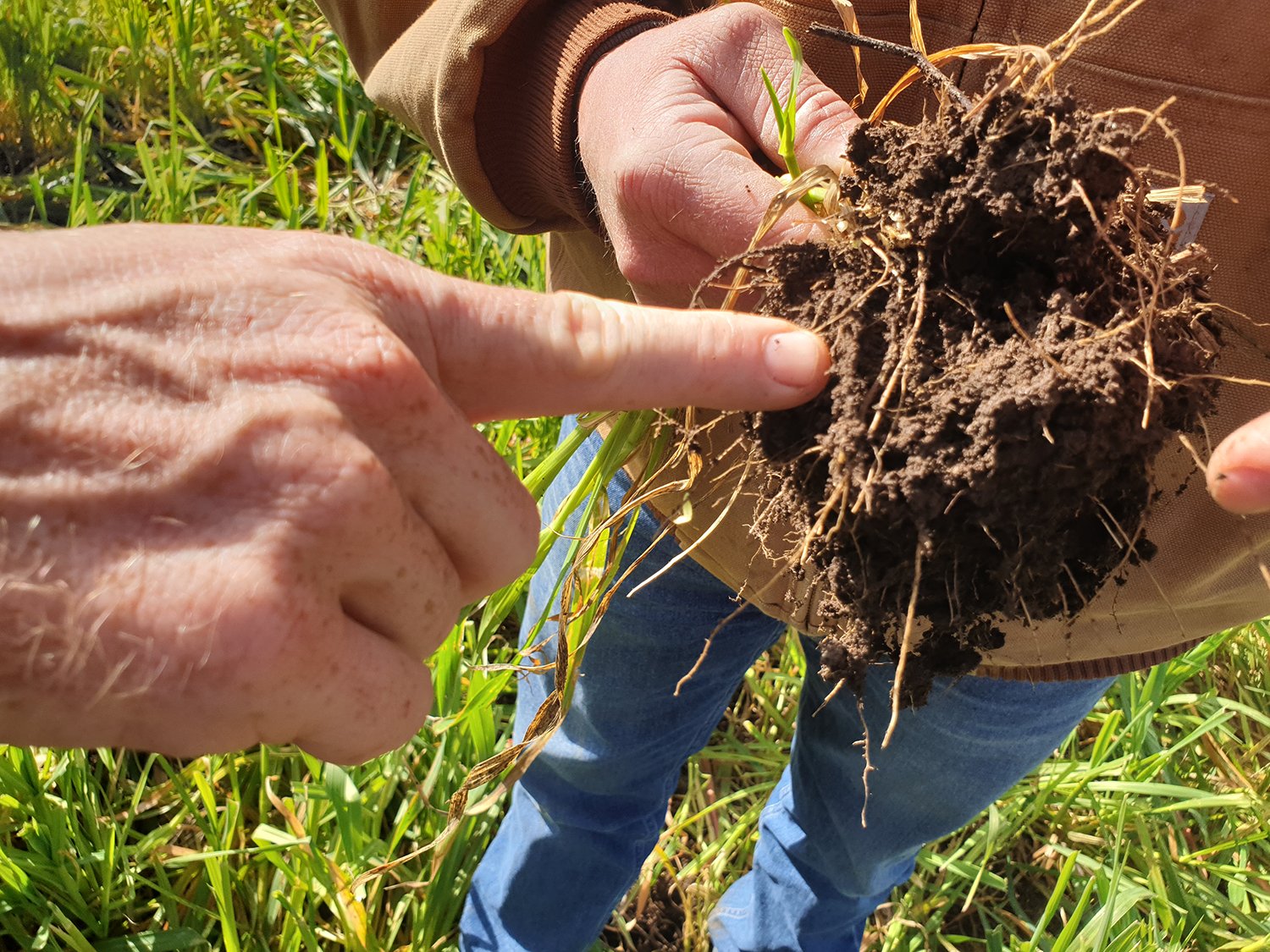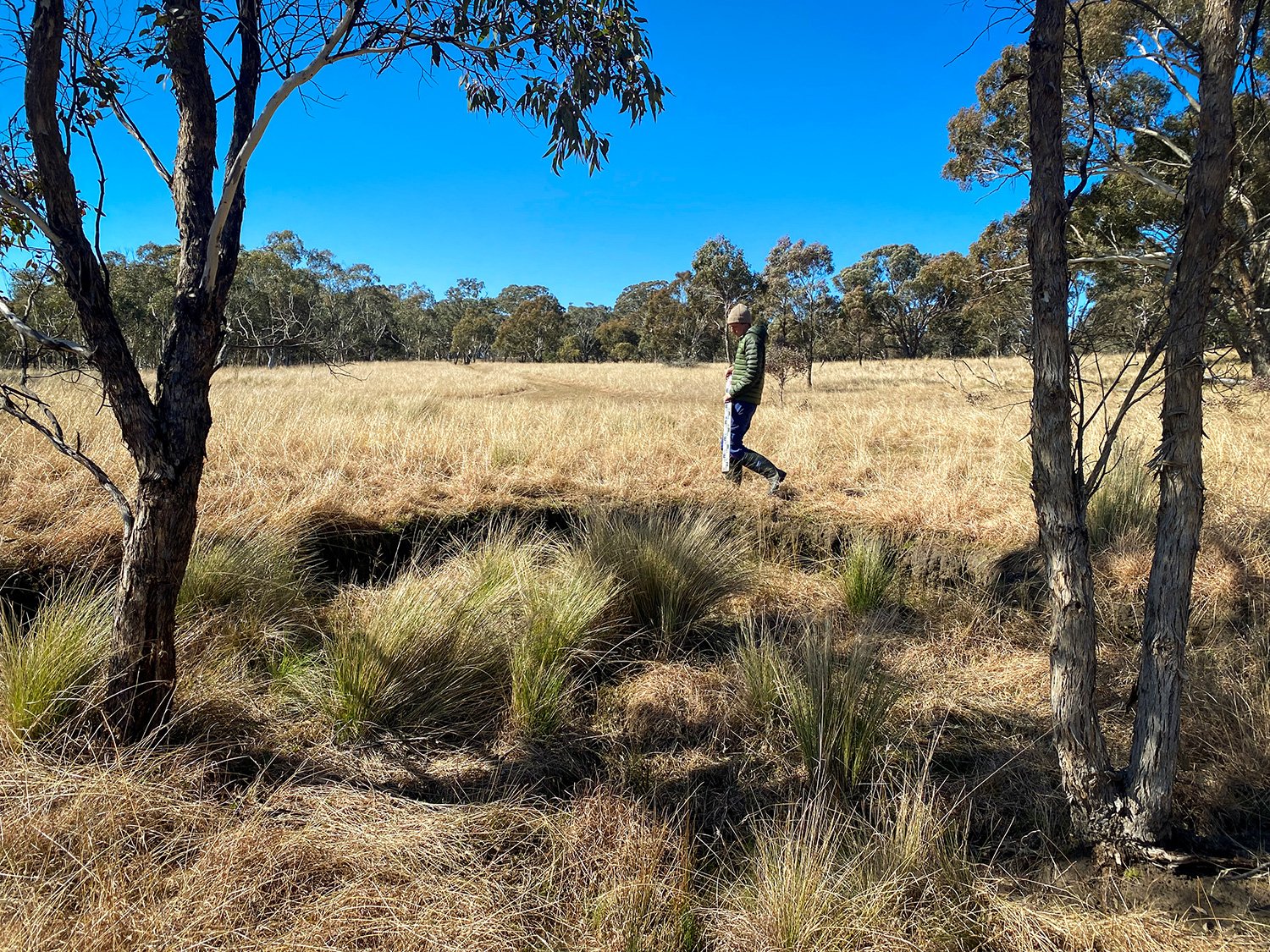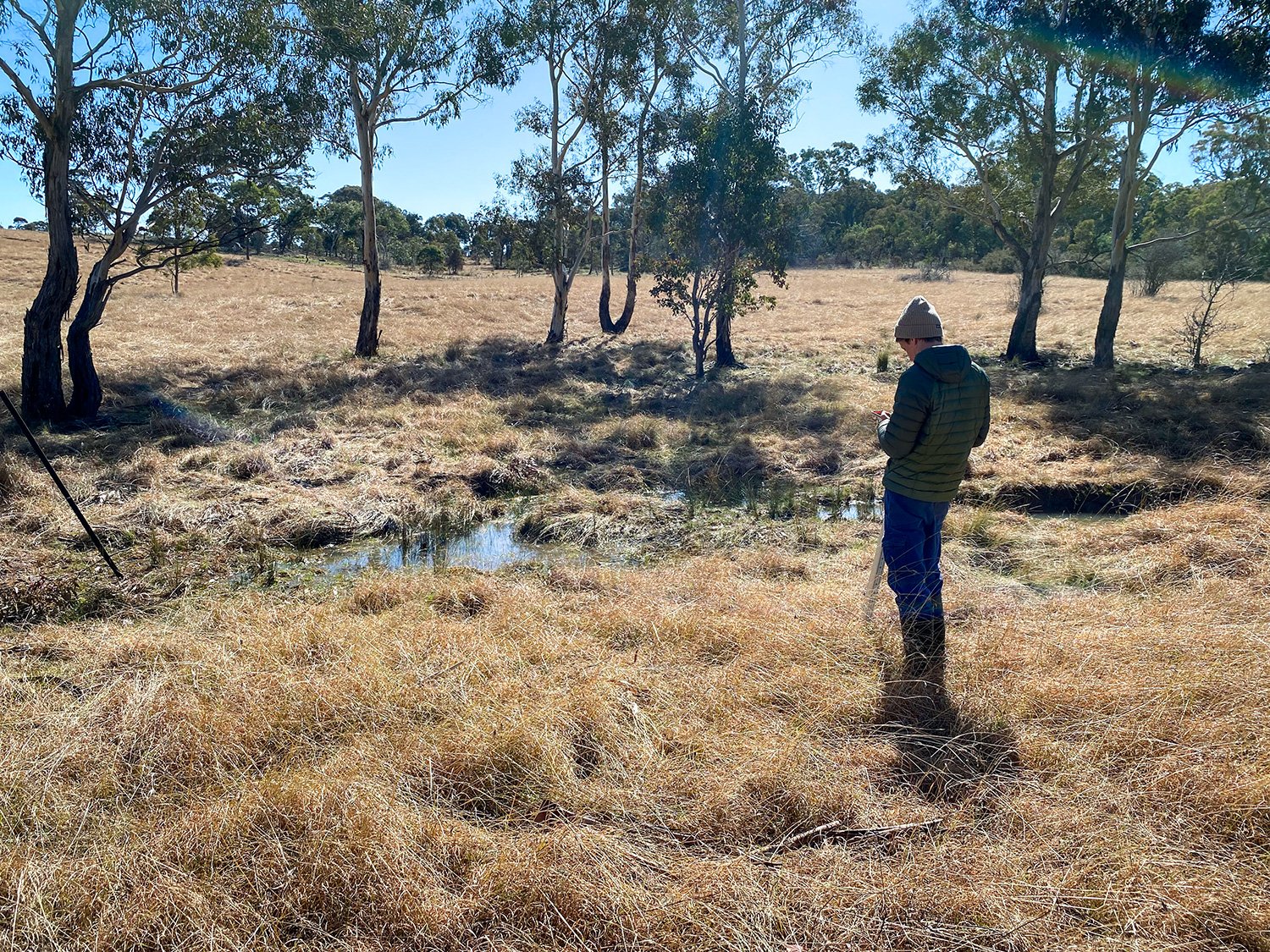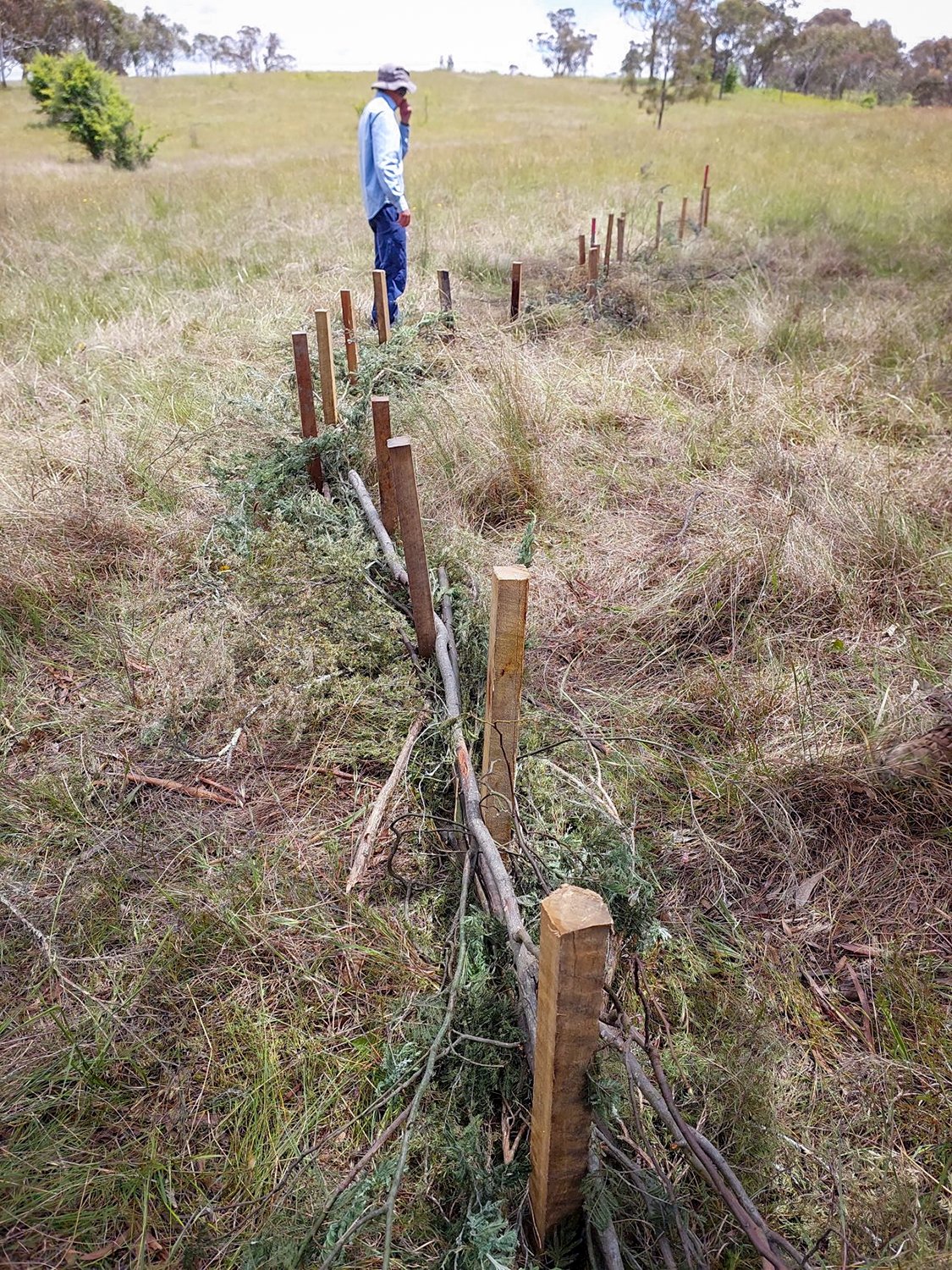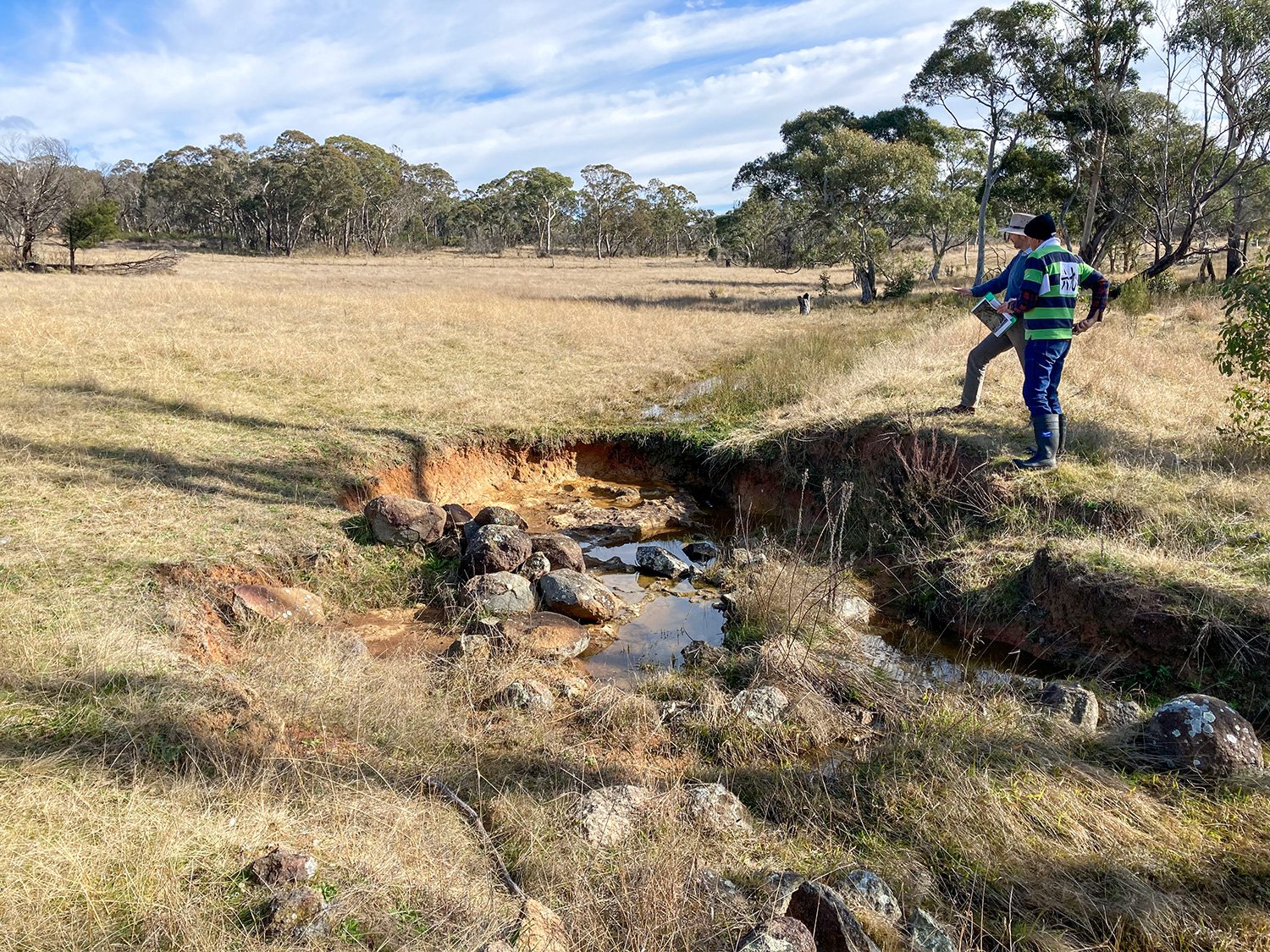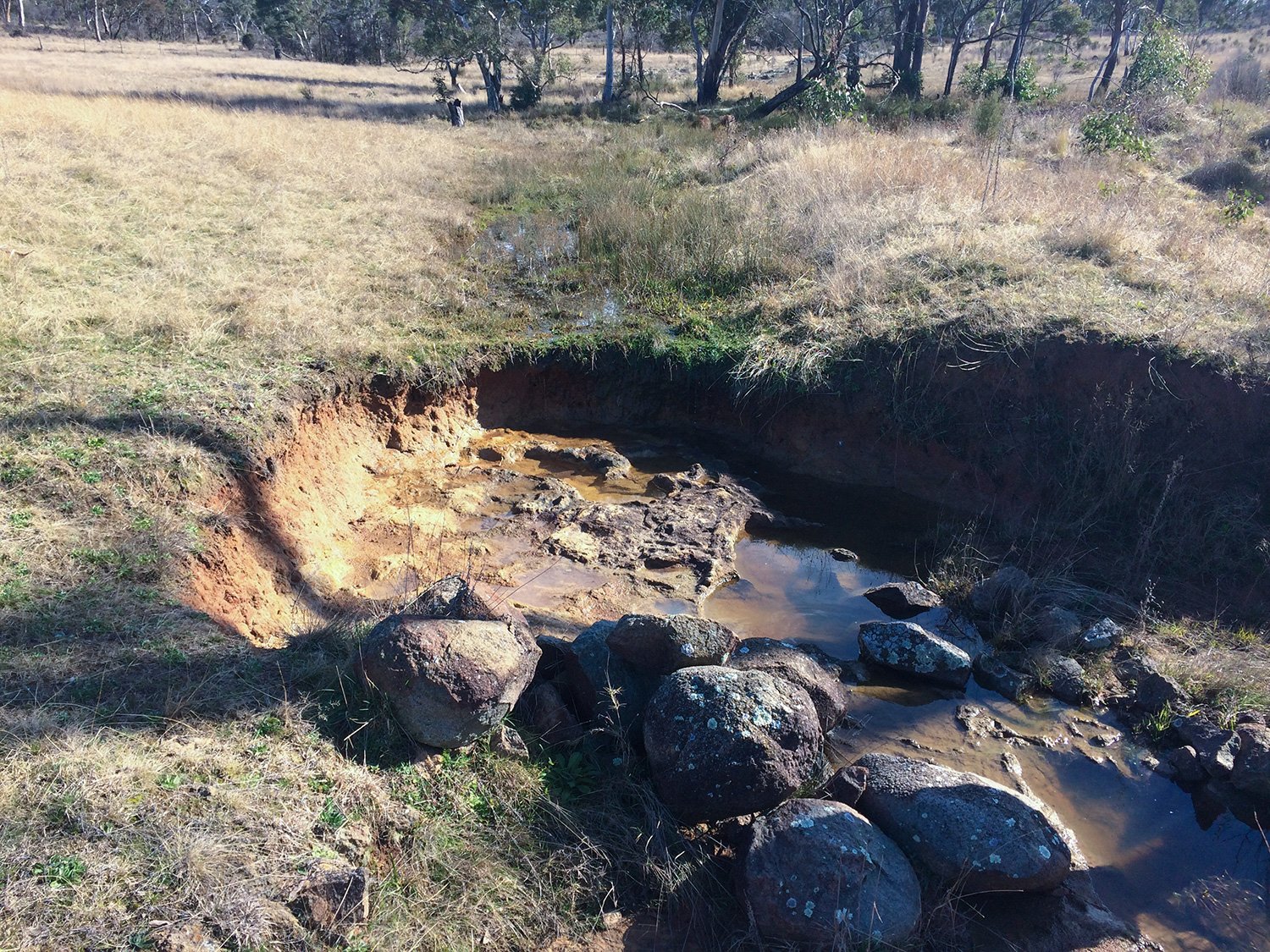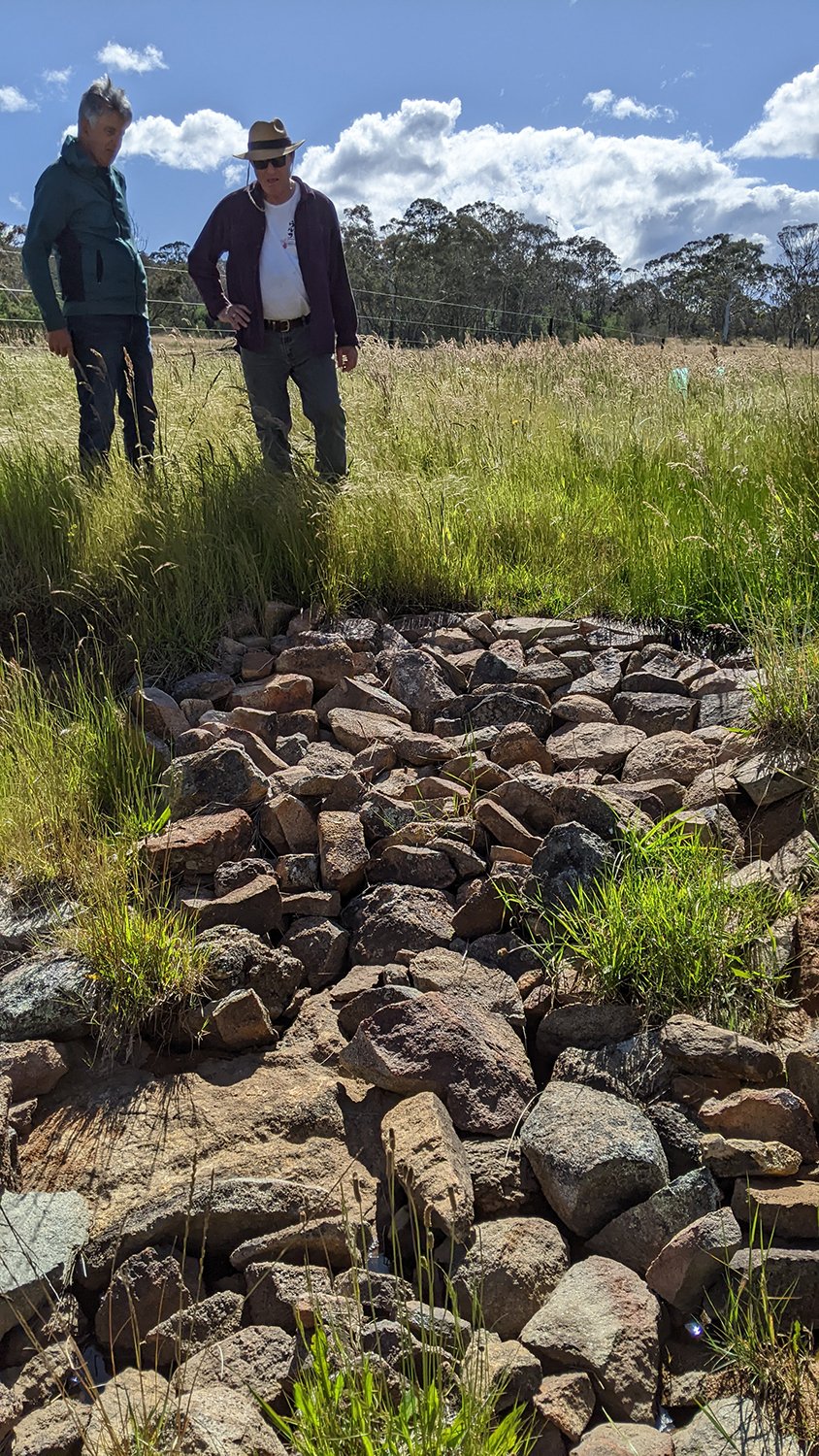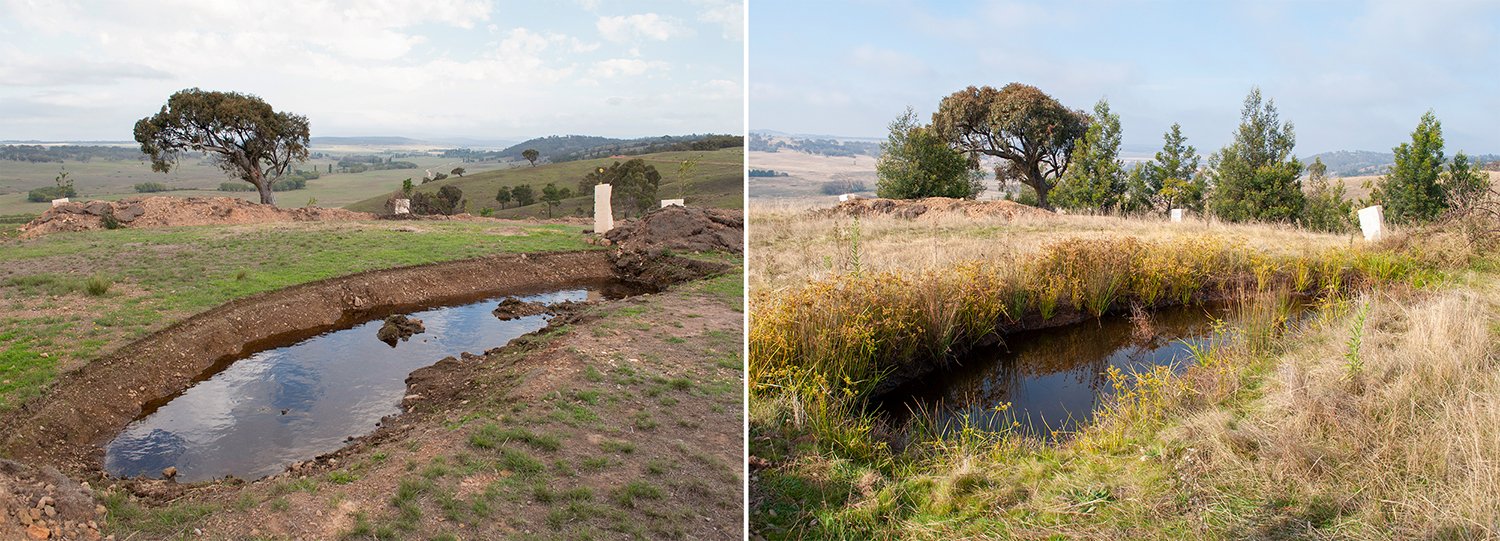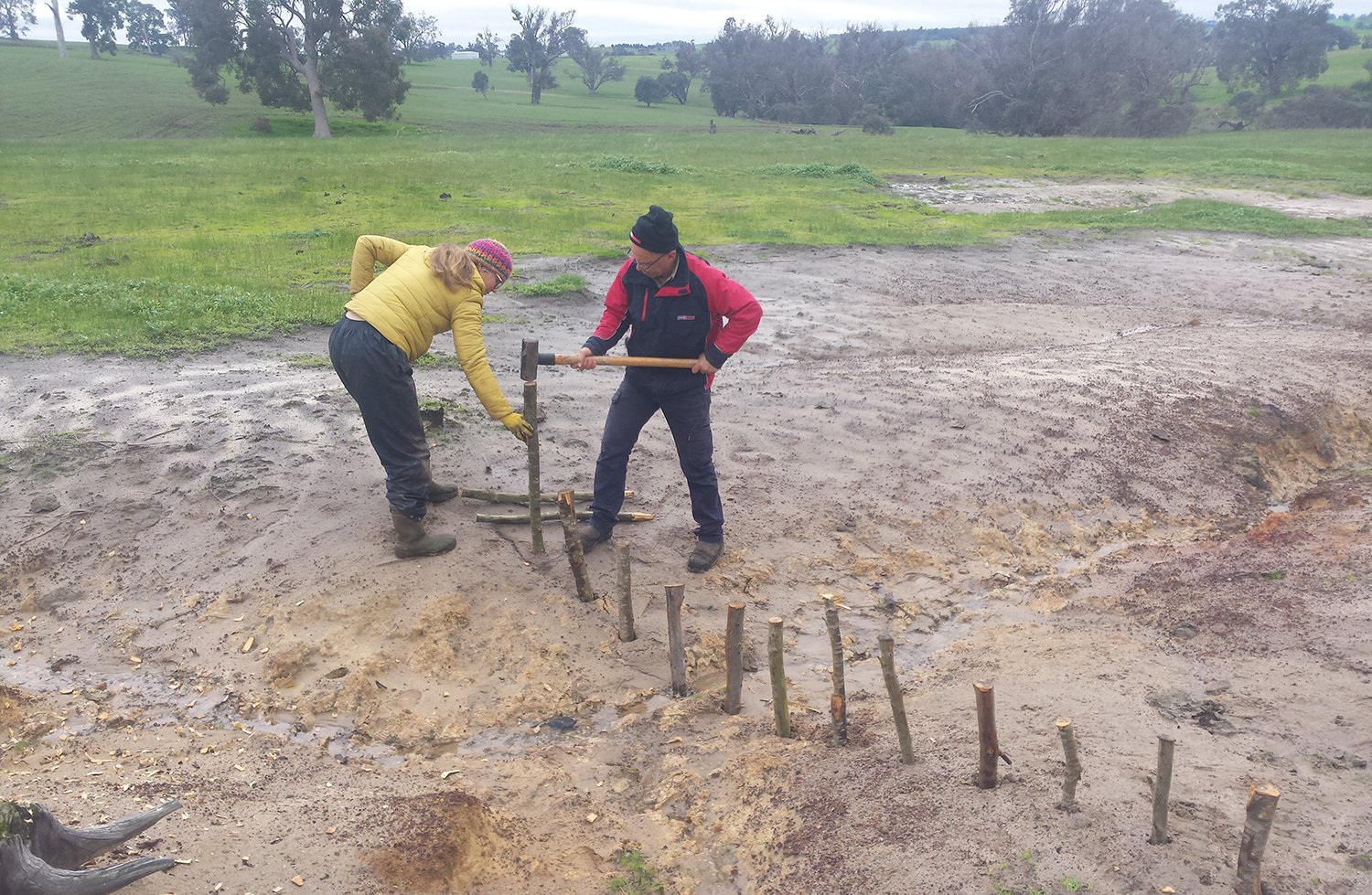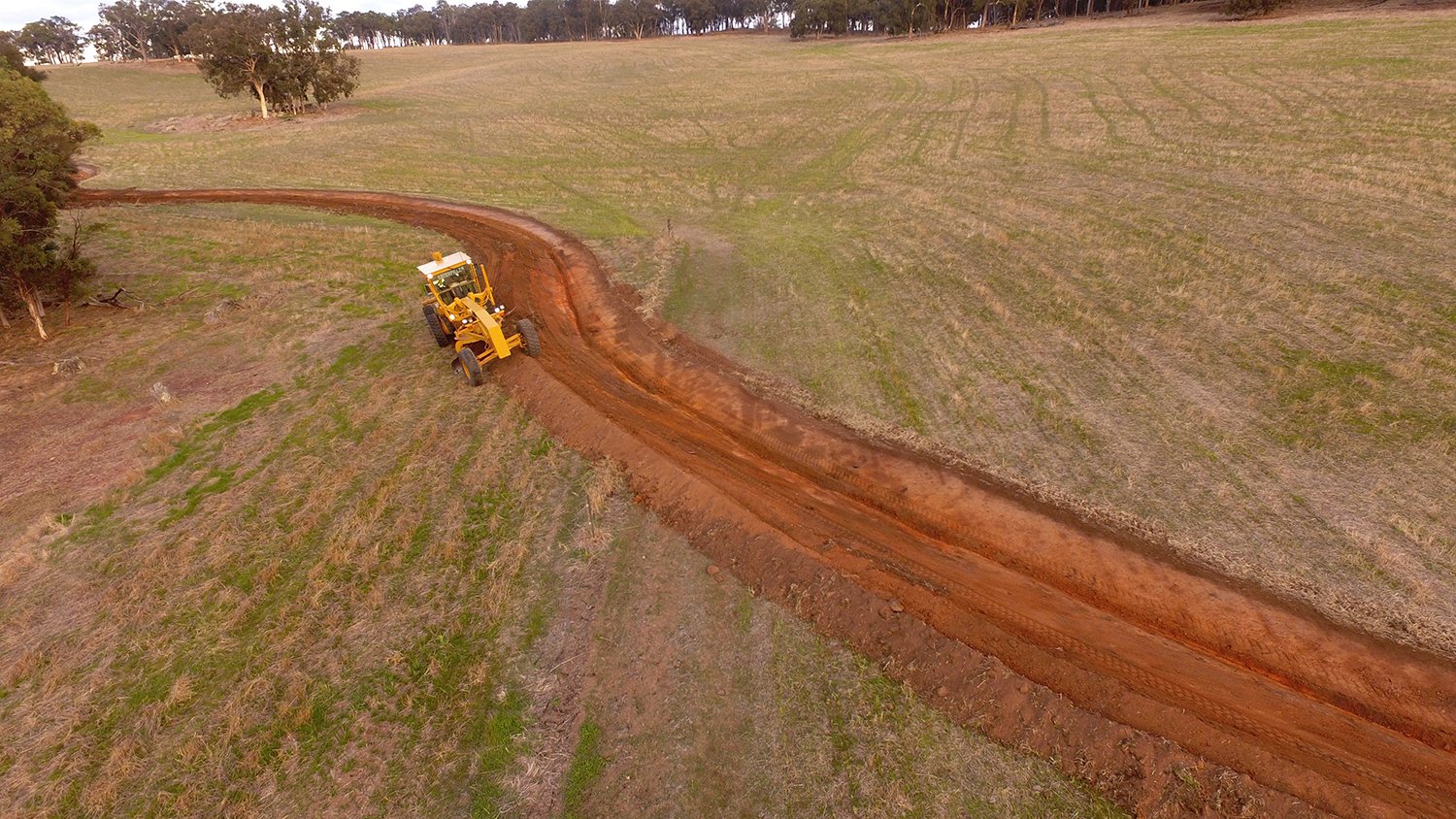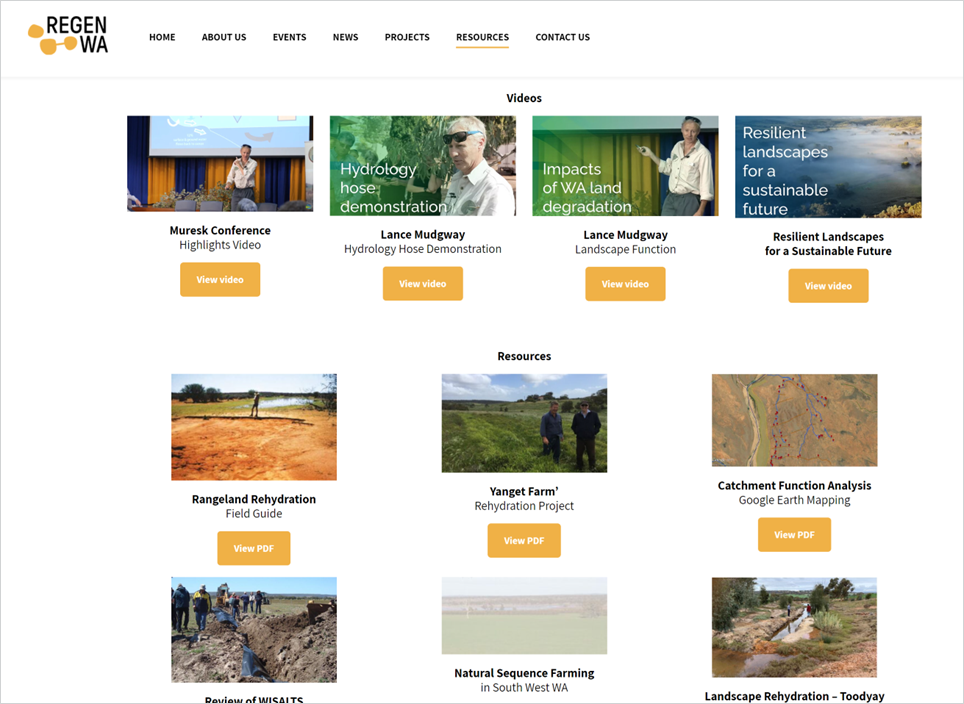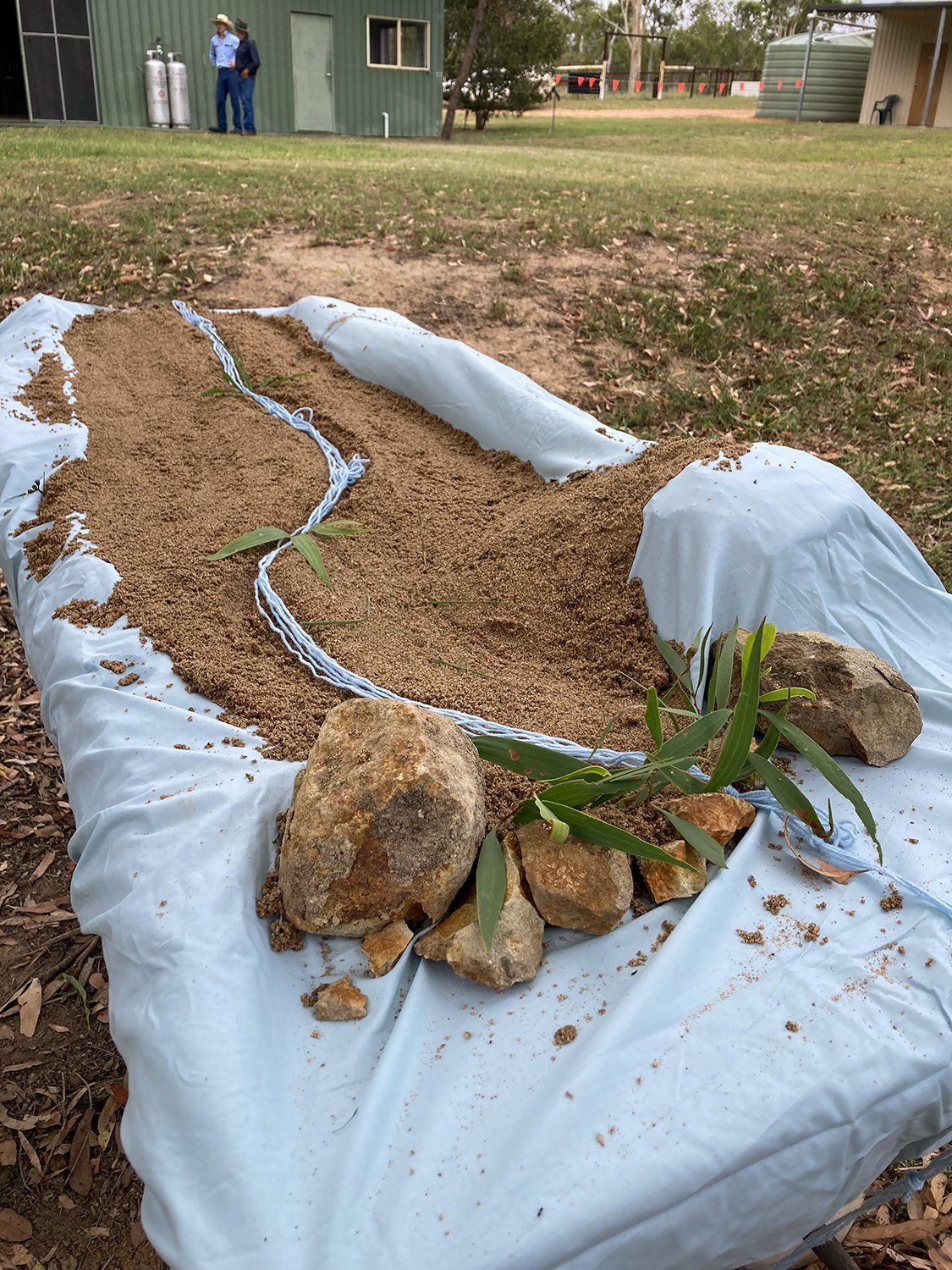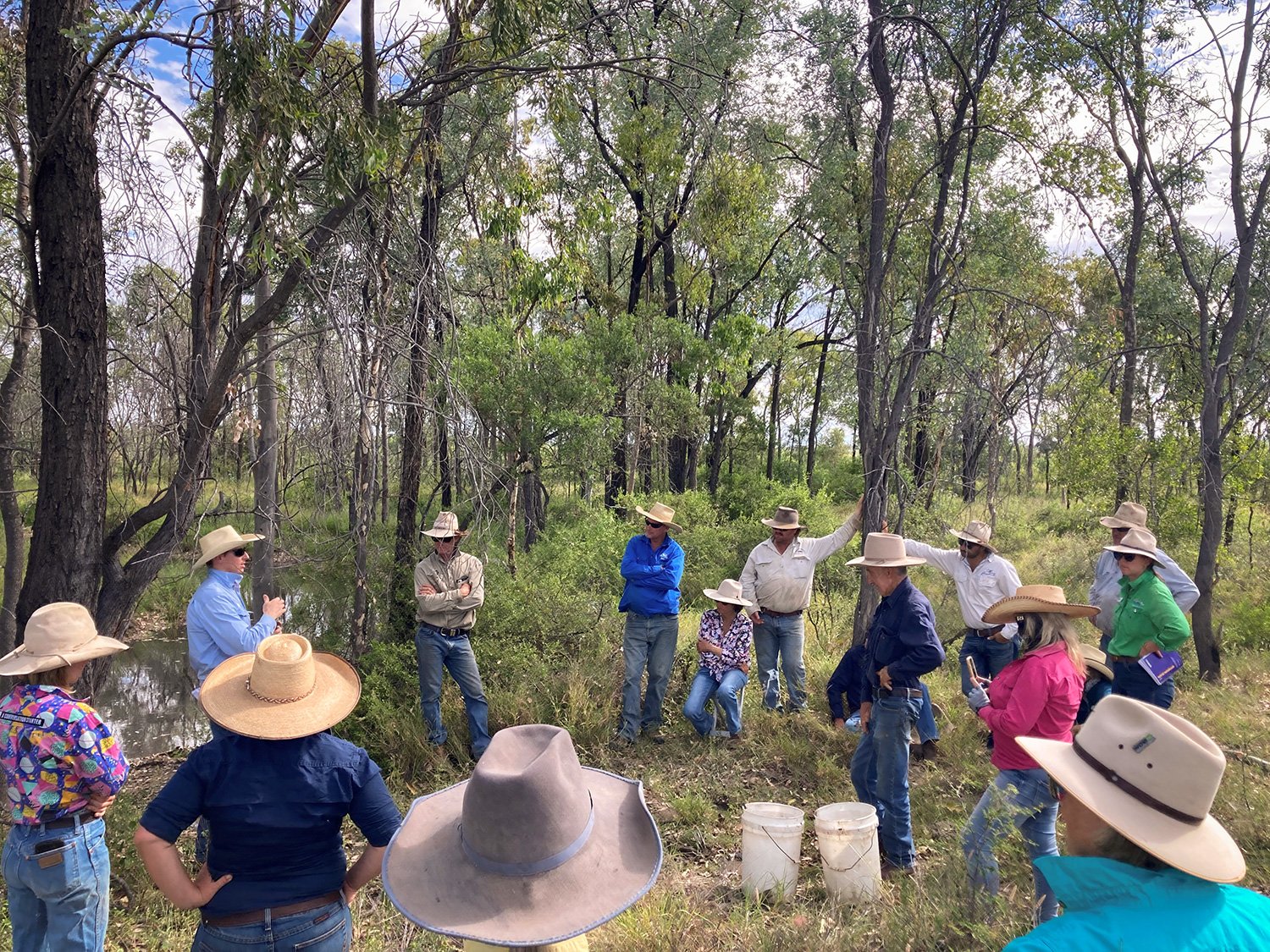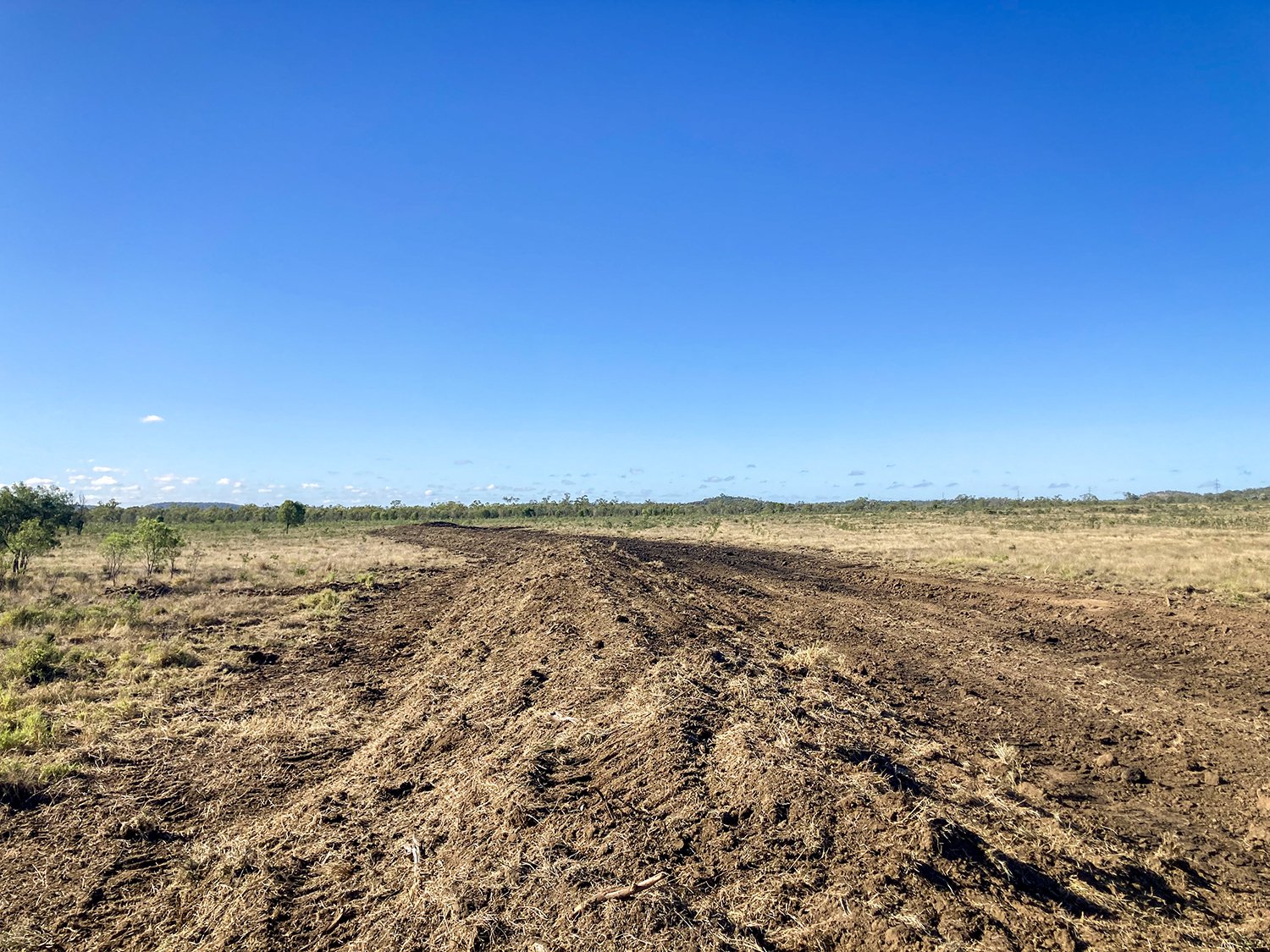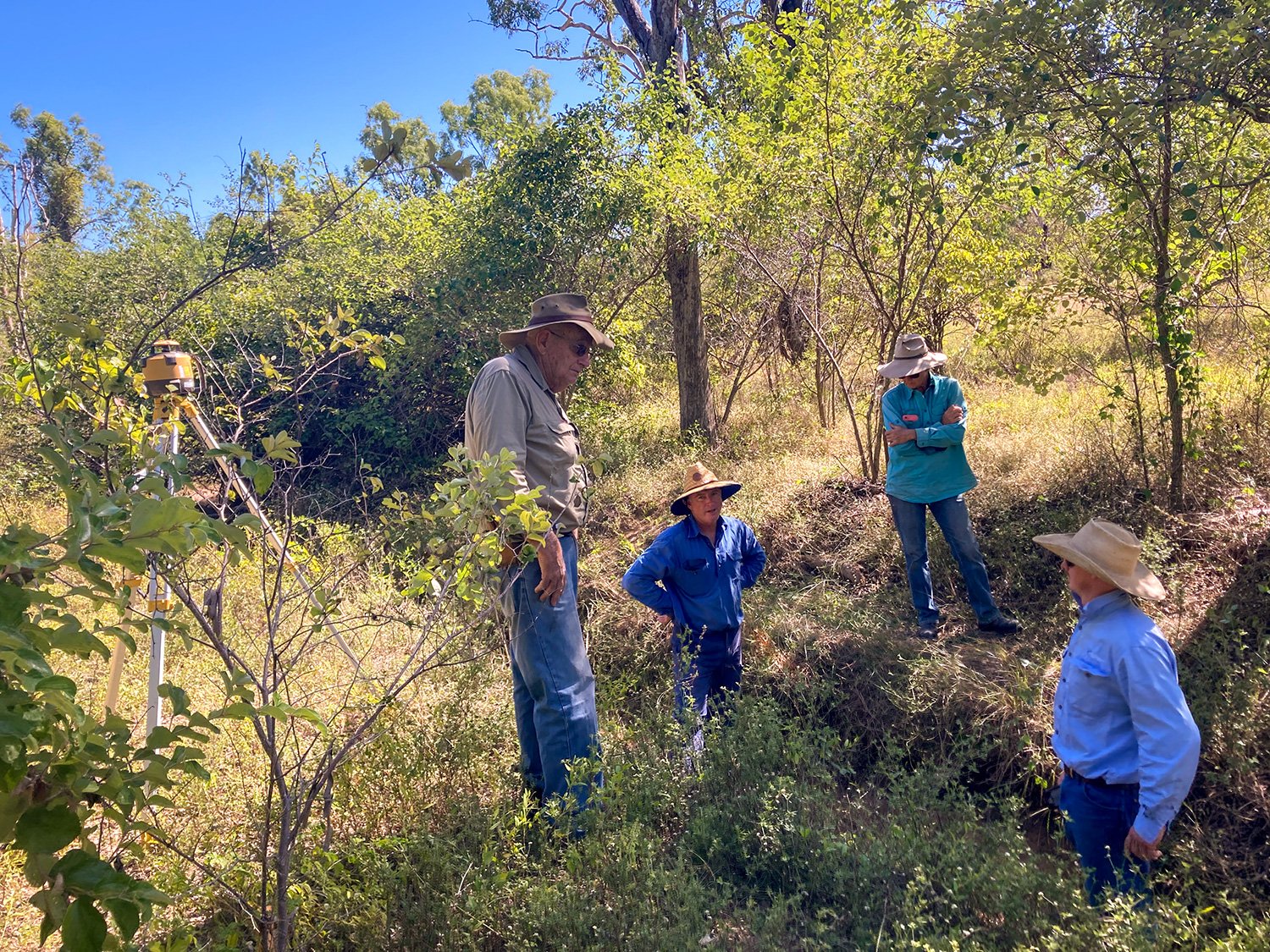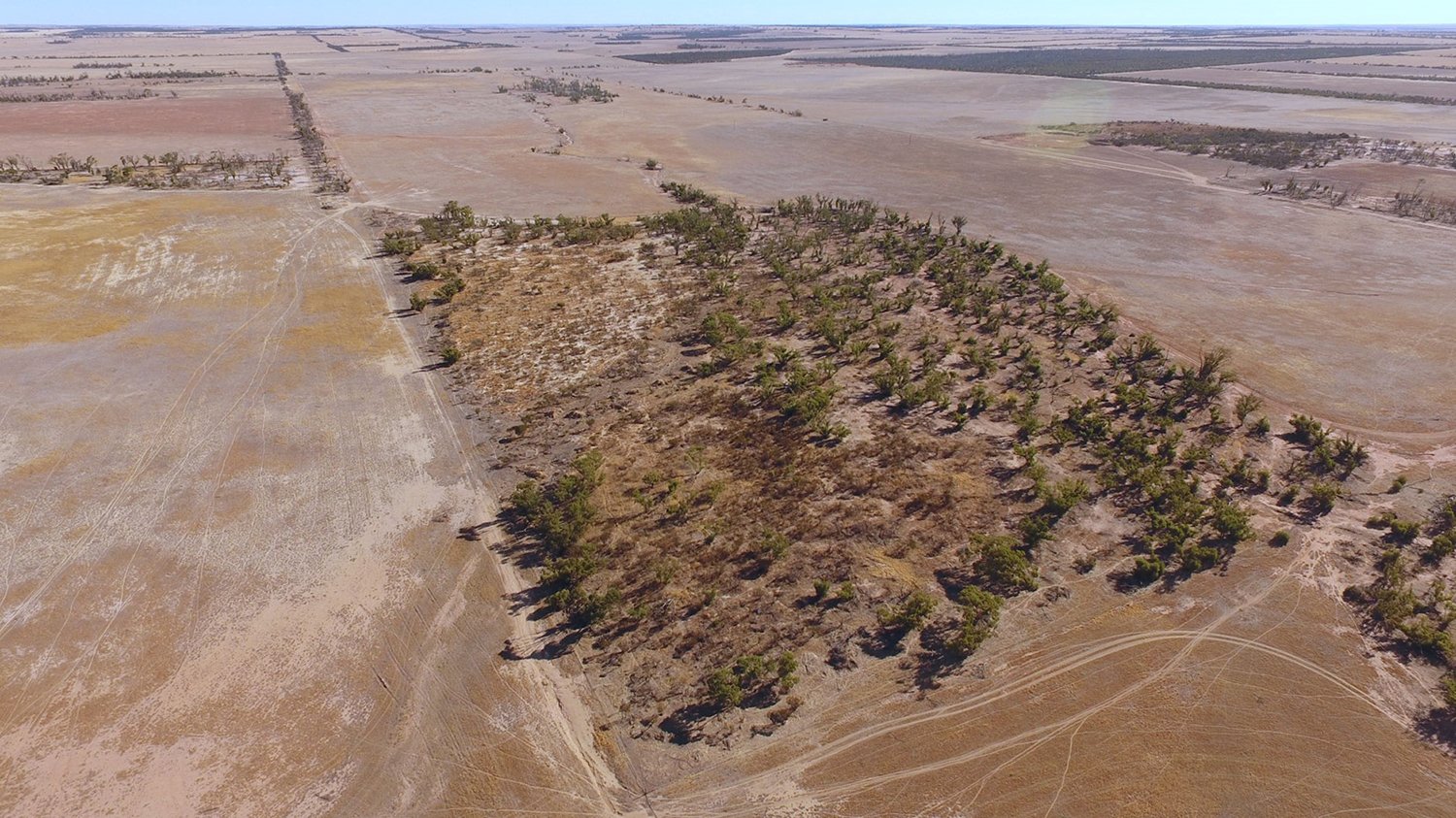We’re seeking Landscape Planners in Queensland, Western Australia and New South Wales / Australian Capital Territory to help generate innovative management solutions including detailed designs for surface and groundwater management.
Our rehydration work continues to expand across the nation. We are also receiving increased interest for our work in relation to projects aimed at sequestering carbon. My view is the ‘low hanging fruit’ of projects done specifically to gain Australian Carbon Credit Units (ACCU’s) are increasingly being viewed cautiously. Projects, such as simply planting trees or not clearing land, may have met the requirements for ACCU’s but are they the best result for overall land management? I don’t believe so.
More comprehensive projects that include landscape repair and rehydration and regenerative agriculture practices, that not only sequester carbon but also improve biodiversity, are what we should be encouraging as they will also contribute to a positive impact on climate.
In fact, this type of improved land management can have a greater impact on climate than just concentrating on the reduction of emissions. In their book “Ground Breaking”, authors Phil and Freya Mulvey, state:
“Reducing CO2 and other GHG emissions alone will simply not be enough. What seems to be missed so often, by scientists and lay people alike, is that the key factor of anthropogenic climate change arises as a result of the increased heat of the Earth’s surface caused by our land-management practices.”
I agree, and as we repair and rehydrate at the catchment scale, our data is also supporting that view.
Yes, we still must continue to reduce GHG emissions, but a greater concentration on better land management is needed if the various targets of governments are to be achieved. It really is a no-brainer. As not only do we see environmental repair, increased resilience to drought, floods and bushfire, in Barrier Reef catchments, it results in massive reductions in sediment flow, significantly improved biodiversity and, with the right agricultural practices, improved productivity. And a direct and positive impact on climate.
Gary Nairn AO – TMI Chairman
Left – Before – Bill McAlister surveying a small headcut.
Right – After – Bill McAlister inspecting final result of headcut remedy.
A half-day Brushpack Workshop has been carried out at Elise and Matt’s ‘Bunduluk’ property in Carwoola, NSW under the supervision of Bill McAlister (Senior Landscape Designer) and Max Brunswick (Field Officer).
During the workshop, various brushpack interventions were installed on the property where erosion had begun some time ago. All work was completed by a small team of participants using only hand tools and material sourced from the property.
Brushpacks are an affordable, DIY approach to repairing degraded land. They can be built across contours to trap soil, seeds, plant litter and nutrients. They also slow and filter water as it moves down a slope.
Cutting brush from the property itself keeps expenses to a minimum compared to bringing in machinery and externally sourced materials. It also makes this type of work much more accessible to land holders who can undertake the work themselves. It’s a great way of utilising wattle or scrub that is growing in unwanted areas on your land.
Contact us via info@themullooninstitute.org if you or your group are interested in having a Brushpack workshop conducted in your area.
Left – Before – Bill McAlister surveying site for pin Wier installation.
Right – After – Bill McAlister inspecting final result of pin Wier installation.
Inspecting the headcut.
Mulloon Consulting visited Don and Suzie Woods at Braidwood near NSW for a site visit from in August 2021, which inspired Don to have a go on his own at repairing a headcut that was moving up a flowline on his 107-ha property.
Headcuts are created by an erosion and scouring process which causes gullies to extend uphill. They can appear quickly once the surface of the soil is exposed, causing erosion to start.
The area at Don’s farm where the headcut was occurring had solodic soils in which the ‘A horizon’ had become slightly acid and the ‘B horizon’ was enriched with sodium-saturated clay, which was reacting with water and becoming unstable and prone to erosion as the water tumbled over the nick-point.
Don sourced rocks from his property and ‘in-filled’ the headcut with the rocks which has stabilised the area. Any water now flowing into the headcut hits the rocks, dissipating its energy. Over time, plants will grow, with their roots further stabilising the area.
Right: Headcut after repair.
Left: Headcut before repair.
Max Brunswick leads the team as the tree planting finally gets underway.
After unprecedented wet conditions thwarted several attempts during to host our Mulloon Institute volunteers on site at Mulloon Creek Natural Farms (MCNF), we were delighted to finally welcome a group of volunteers on a spectacular day in November.
Volunteers travelled from as far away as Sydney and the Southern Highlands to join Mulloon Institute staff for a day of tree planting on the MCNF property, Duralla. The hilltop planting location further added to the volunteer planting effort of November 2021, and several volunteers who attended this day last year were thrilled to see the growth and success rate of these plants.
The team of volunteers included retirees, students, conservationists and a group from Abbvie. Together with Mulloon staff, they worked impressively in very overgrown conditions to install a significant number of plants under the guidance of our tree planting expert, Max Brunswick.
Our Principal Landscape Planner, Peter Hazell, was in attendance to outline the Mulloon Rehydration Initiative (MRI), our catchment scale landscape rehydration project which the tree planting directly contributes to. The MRI is jointly funded by the Mulloon Institute and the Australian Government’s National Landcare Program, with assistance from the NSW Government’s Environmental Trust.
The Yuin people are the Traditional Custodians of the land where the two Mulloon properties are located. The area is a very special place to Yuin people, who originally met with the neighbouring Nations of Ngunnawal, Gundungarra and Ngarigo in this area to share knowledge, wisdom, and stories to better know and understand their mother land and to care for Country. Mulloon Institute founder, Tony Coote, and Back to Country founder and Yuin Elder, Uncle Max Harrison, formed a friendship and shared a vision to heal Country by working together. The Mulloon Institute and Back to Country collaborate to continue this legacy and through the Mulloon Rehydration Initiative, we continue to work towards this vision with every tree we plant. We worked together with our volunteers, sharing stories and knowledge, in the spirit of this shared vision.
Many thanks to our wonderful volunteers! Your dedication and passion are humbling.
If you are interested in volunteering with the Mulloon Institute and participating in a similar event, please follow this link to register as a volunteer.
Landscape rehydration results at Duralla, NSW.
We are very pleased to be notified that the NSW Government has put into regulation the Mulloon Institute’s recommendation regarding landscape rehydration.
Specifically, the NSW Planning Minister the Honourable Anthony John Roberts MP gazetted an amendment to the Transport & Infrastructure State Environment Planning Policy (ISEPP) titled, “Development permitted without consent – landscape rehydration infrastructure works”.
This amendment will apply to lands zone Primary Production (RU1), Rural Landscape (RU2) and Primary Production Small Lots (RU4). It defines, “landscape rehydration infrastructure works” as “works involving placing permeable structures on the bed of a stream to reduce erosion and maintain or restore flows for ecological purposes, not including works designed to impound water or impede the passage of fish”.
This is a significant step forward in reducing the bureaucratic hurdles experienced by us in our endeavours to rehydrate Australia, as it removes the need for a development application (DA) and the various other requirements that a DA can entail. Landscape rehydration infrastructure works will still require a ‘controlled activity approval’ under the Water Management Act 2000 and may require a licence under the Crown Land Management Act 2016.
This significant change would never have occurred if our Mulloon Law Committee (MLC), led by our recently appointed Board Director, Matt Egerton-Warburton, hadn’t taken this problem to the NSW Government with a proposed solution. It has taken well over two years to get to this point, but we got there. The MLC pursued this because we knew first-hand that landscape rehydration infrastructure should not be considered in the same vein as developments that could impact negatively on the environment. The NSW Government agreed.
During negotiations with the NSW Government, we also recommended that a Code be developed to streamline approvals even more. While there was support for such a proposal, the Department was unable to commit to the development of it. So, the Mulloon Institute has decided to undertake the writing of a Code with the assistance of Dr Gerry Bates from our Law Committee, together with TMI’s Peter Hazell and Dr Laura Fisher. They plan to have a draft ready to lodge with government early in 2023. Infrastructure built under an approved Code would reduce the regulatory burdens in the same way other developments, such as buildings, comply with a Code. Watch this space!
READ the related Media Release:
NSW Government leads Australia with progressive legislation to heal our waterways, 9 December 2022
Paraway, owned by the Warren and Lori Pensini, forms one of the seven properties in the Landscape Rehydration Trial and Demonstration in the Wheatbelt of WA.
Mulloon Institute has been working with several landholders in Western Australia over the course of 2022 to deliver the Landscape Rehydration Trial and Demonstration in the Wheatbelt of WA. This project includes a literature review of Landscape Rehydration works in WA and the assessment and design of Landscape Rehydration works across seven properties in the WA wheatbelt.
An upcoming highlight of the project will be Mulloon Institute’s Introductory Workshop and 2-Day Bootcamp in March 2023. The workshop and bootcamp will showcase completed Landscape Rehydration works at Warren and Lori Pensini’s property Paraway in Boyup Brook, WA. Each event is heavily subsidised by funding from the Western Australian Government’s State NRM Program, so get in quick to reserve your spot!
For more information on Landscape Rehydration in Western Australia, visit the new RegenWA digital Landscape Rehydration Hub, which acts as a one-stop-shop for landscape rehydration resources including case studies, educational videos and manuals.
More info on the Paraway Introductory Workshop and 2-Day Bootcamp in March, 2023.
This project is supported by funding from the Western Australian Government’s State NRM Program.
In early 2022, Landscape Rehydration works were completed on Paraway in Boyup Brook, WA.
In 2022, Mulloon Institute undertook a review of Landscape Rehydration in Western Australia.
RegenWA has launched a Landscape Rehydration Hub as a central point for all thing Landscape Rehydration.
The Queensland team have finished off the year delivering workshops and putting the finishing touches on large-scale construction projects.
Workshops
Sam Skeat (Regenerative Agriculture Consultant) and Joe Skuse (Landscape Planner) have recently run workshops for Terrain NRM in the Herbert River catchment in Queensland’s wet tropics, and for CHRRUP at a location 70km west of Emerald in Central Queensland.
At both the workshops, they were able to trial new activities developed by our education team and despite the differences in climate and landscape, Sam and Joe covered the same foundational topics of understanding how the landscape was built, how it was degraded and what we can do to fix it.
Aiding the workshops was a new landscape model activity that visually explains the patterns and processes that we work with in landscape rehydration.
In the afternoon, both groups spent a few hours moving through the landscape on a property tour. Information shared in the morning session was transferred from the model to the landscape-scale, where participants were presented with real life examples of landscape building, degradation and repair.
A key message of the day was that managing plants and animals is the biggest driver for positive landscape change. Participants were encouraged to think about how they would prioritise landscape rehydration work on their property in reference to their own lifestyle, business and landscape.
These workshops were paid for and delivered separately on behalf of Terrain NRM and CHRRUP.
Right: Landscape rehydration workshop for CHRRUP in Central Queensland.
Left: Landscape model activity explaining how landscapes are built and degraded.
Weetalaba Station
Construction has also finished up at Weetalaba Station, 50 km south of Collinsville.
This project showcases how landscape rehydration works can be used to reduce the amount of sediment reaching the Great Barrier Reef, while achieving the co-benefits of increased soil moisture, improved biodiversity and increased agricultural productivity. Flows have been directed out of an actively eroding gully system back to soil surface. Plants are cycling the water as well as the nutrients transported in the sediment, which means the agricultural landscape has better infiltration and soil moisture.
This project is funded by NQ Dry Tropics through the Great Barrier Reef Foundation.
Right: Rock chute at Weetalaba.
Left: Contour bank at Weetalaba.
Lansdown Catchment Rehydration Initiative
As the year comes to a close, the team are also reflecting on the successes of the Lansdown Catchment Rehydration Initiative (LCRI).
The LCRI has worked to build drought resilience in the Lansdown Creek community through capacity building in landscape rehydration works.
Sam and Joe have had the privilege of working with a passionate group of landholders who are driven to make positive changes for their landscape and business.
These workshops was supported by NQ Dry Tropics and the Mulloon Institute, through funding from the Australian Government’s Future Drought Fund.
Above: Working with landholders Ty, Troy and Jodene Green to build a leaky weir in an eroded flow line as part of the LCRI.
Coopers Creek on Tirrana, WA.
Koobeja in The Lakes, WA, and Tirrana in the Avon River catchment form two exciting projects being undertaken by Mulloon Institute’s Lance Mudgway in WA this year.
Koobeja is a 2,000 ha livestock and horticulture operation, in the process of transitioning to regenerative agricultural practices. The Mulloon Institute’s work at Koobeja involves designing restoration works that will be constructed in conjunction with water storage dams and a natural swimming pool!
Tirrana, located approximately 300km north-west of Perth, was subject to a severe storm event in March 2020, which caused significant damage. Tens of kilometres of fencing was destroyed or damaged and much of the main waterways were eroded, with deposition of sediment at various locations, including into dams. Many of the smaller areas of remnant vegetation were significantly damaged, with almost all foliage removed and many trees felled or split and broken. At the time of Mulloon Institute’s first visit, most of the fencing had been replaced, but the vegetation was only just beginning to recover, with many trees now dead. Mulloon Institute is now working with landholders on Tirrana to re-establish the natural landscape function across the property after the severe storm damage. Landscape Rehydration works are focused on the 7,581.5 ha Coopers Creek catchment on the property and include in-stream works, hillslope contours and extensive revegetation. All works are aimed towards improving landscape productivity and prevent further degradation of eroded and waterlogged soils.
Coopers Creek flowing through Cherokee Paddock on Tirrana, WA.
Koobeja, Western Australia.
The Mulloon Institute’s project at Tirrana is supported by funding from the Western Australian State NRM Program through AvonGro, a WA volunteer-run not-for-profit incorporation.
This presentation by Research Manager Luke Peel, summarises the results-to-date of the extensive flora and fauna monitoring undertaken as part of the Mulloon Rehydration Initiative, including the numerous positive effects of catchment scale landscape rehydration can generate for regenerating and building resilience.
Key points include:
-
WATER – quantity & quality have responded well, due to landscape rehydration works
-
RIPARIAN VEGETATION – has improved for most transects across the MRI
-
FISH – native fish have responded very well, introduced species are in decline
-
FROGS – are doing well, with increases in species composition & populations
-
BIRDS – species & populations are doing well, including 7 rare/declining species and 4 threatened species noted in the project area.
The Mulloon Rehydration Initiative is jointly funded through the Mulloon Institute and the Australian Government’s National Landcare Program, with assistance from the NSW Government’s Environmental Trust.
The seminar also includes a presentation from TMI Science Advisory Council member Dr David Freudenberger on the topic of ‘Biodiverse carbon farming – opportunities and challenges’.
Convenor Dr Matt Colloff congratulated both speakers with providing positive environmental outcomes that indicate how landscape regeneration can build resilience and bring hope in the light of climatic extremes.
Thanks to the ANU Fenner School of Environment & Society for giving us this opportunity to present at the seminar, and for allowing us to upload and share this presentation with our followers.

